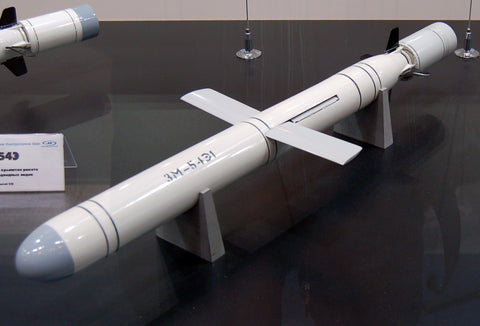
3M-54 Kalibr: Is Russia’s Most Advanced Cruise Missile Being Wasted in Ukraine?
The current war between Russia and Ukraine has seen a wide variety of sophistication in the weaponry on both sides. Although the Russians seem to have enjoyed the most success where they concentrate great numbers of such relatively simple but deadly weapons as tanks and artillery, they have also made considerable use of the most technologically advanced items in their arsenal.
These are the 3M-54 Kalibr cruise missile and its various derivatives.
GET HISTORY 'S GREATEST TALES—RIGHT IN YOUR INBOX
Subscribe to our Historynet Now! newsletter for the best of the past, delivered every Wednesday.
Close
Thank you for subscribing!
Submit
History of the Kalibr
The 3M-54 Kalibr was developed by the Novator Design Bureau in 1994 as a counter to the American Tomahawk cruise missile and has been under production in various forms ever since. The North Atlantic Treaty Organization codenames it the SS-N-27 Sizzler.
Kalibrs launched from warships in the Mediterranean Sea were extensively used during the Russian involvement in the Syrian Civil War between October 2015 and December 2018.
Recommended for you
The Kalibr's Stats
With a length of 8.9 meters (29 feet) and a diameter of 5.33 meters (17.5 feet), the basic Kalibr is a multistage, solid-fuel turbojet with a modular propulsion system to accommodate five versions: two anti-ship, two anti- submarine and one for land targets. Depending on size, performance and launching platform, the other variants go under such designations as 3M14 Biryuza (“turquoise”), 3M-14T Kalibr-NK and 3M-14K Kalibr-PL. More advanced versions are still under development, to improve “combat efficiency.”
Existing variants are capable of being fired from warships as small as a corvette, from submarines and from land vehicles. All use vertical launch systems. They reach their targets through a combination of inertial guidance plus terminal active radar homing, although more current variants have been modified to use satellite signals using a DSMAC (digital scene matching area correlator).
Range varies from 220 to 2,500 kilometers (140 to 1,550 miles), depending on whether the second propulsion stage is driving the warhead at a supersonic sprint or cruising along at subsonic speed for greater range.
The missile can carry from 400 to 500 kilograms (880 to 1,100 pounds) of high explosive or a nuclear warhead at Mach 0.8, 2.5 or 3.
The Kalibr in UKraine
After Syria, the next major usage of the Kalibr came on Feb. 24, 2022, when some 30 missiles helped herald the “special operation” in Ukraine. Above the cacophony of guns, the cruise missiles turn up from time to time in incidents that make the international news.
Between June 25 and 26, 60 to 80 missiles were launched, of which 30 were aimed at Zhytomir, 10 of which were shot down short of their targets by Ukrainian defenses. On July 14, three Kalibrs hit the city center of Vinnytsia, killing about 20 people — three of them children. Ukraine reported that its defenses shot down two more of the missiles. On July 23, Maria Zakharova of the Russian Telegram __ reported that “Kalibr missiles destroyed military infrastructure in the port of Odesa, with a high-precision strike.” Ukrainian President Volodymyr Zelenskyy quickly denied that the Russian strikes had involved any tactical precision.
The Russian military pays a price for the Kalibr’s capabilities, since each missile costs an average of $6.5 million each. Up for debate amid a war that has entered its sixth month is whether Russia’s most advanced missile is indeed being guided to vital military targets or simply joining the general barrage of roughly aimed ordnance, wasting its primary asset. Each side has its own appraisal, but the truth will ultimately be revealed over the battlefield.
historynet magazines
Our 9 best-selling history titles feature in-depth storytelling and iconic imagery to engage and inform on the people, the wars, and the events that shaped America and the world.
